On an African Safari, each person makes a personal list of the dream animals they wish to see, and the rhinoceros is usually on it. Seeing a rhino in the wild for the first time is a moment you’ll never forget. The fact that you even caught a glimpse of one of the most charismatic and endangered African mammals will make you feel honored and humbled. After all, there are less than 7,000 black rhinos (estimates at around 6,400 in 2024) left in the wild and less than 17,000 white rhinos. So you’ve just seen one of the last 24,000 wild African rhinos, but which one was it? Was it a black rhino or was it a white rhino?
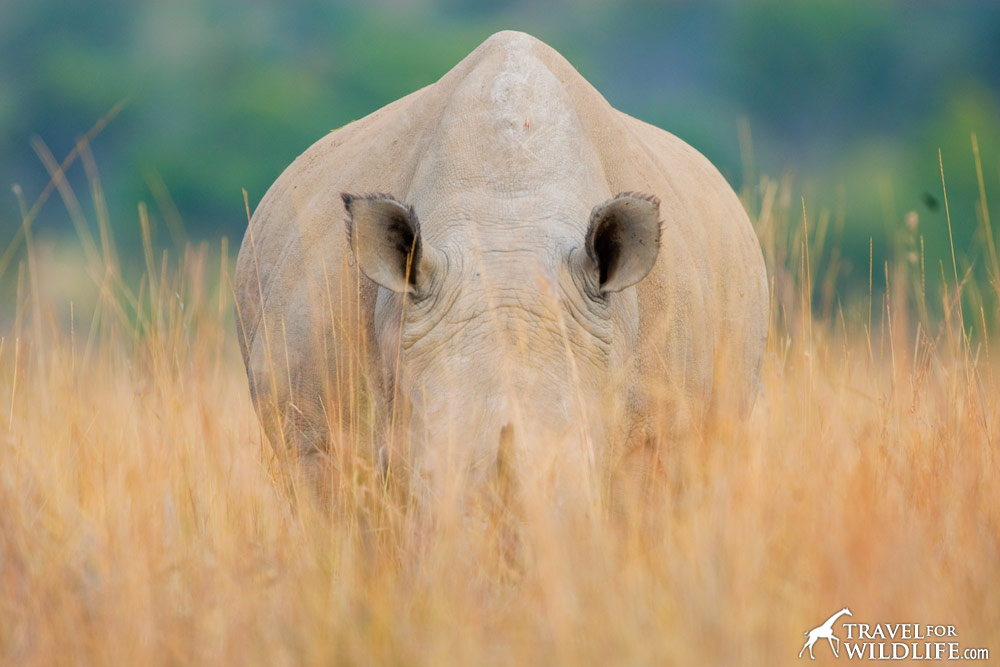
Hint: It is not the color of their skin that differentiates them. They are both grey.
The main difference between a black and a white rhino is the shape of their mouths. So if you see a rhino butt, you should wait patiently until it is facing you before driving on. Watching its behavior may give you some clues but if you want a definitive answer you need a good look at the head.
Now that you can see his face, take a look at the mouth. Are the lips wide and square or is the top lip pointy and hooked?
Black rhinos have a pointy prehensile upper lip that enables them to browse selectively. The lip acts somewhat like a finger for manipulating bark and twigs, but it uses its molars to take big bites and to chew woody growth or fibrous plants. White rhinos, on the other hand, have square lips and a wide flat mouth that is adapted to grazing on grass. In fact, many believe the name White Rhino is really a mis-translation of what early dutch settlers used to call it: the Wide Rhino (or wijd in dutch). There really is very little difference in color between the black and white rhino, so if you’re having trouble remembering which is which, think of it as the wide-mouthed rhino instead of the white rhino!
Differences Between a Black Rhino And a White Rhino
(scroll sideways to see all content in table)
| Trait | White Rhinoceros | Black Rhinoceros |
|---|---|---|
| Other Names | square-lipped rhinoceros | hooked-lip rhinoceros |
| Weight | 4,000-6,000 lbs | 1,700-3,000 lbs |
| Height at shoulder | 5′-6′ | 4.5′-5.5′ |
| Length | 12′-15′ | 10′-12.5′ |
| Head Posture | holds downward so mouth is close ground | holds forward for browsing trees |
| Head Shape | bigger head, longer forehead, larger neck, larger ears, pronounced hump | smaller ears, shorter forehead, less pronounced hump |
| Behavior | Less aggressive, a gentle giant | shy, short tempered, more aggressive |
| Social | Social, sometimes found in groups | Solitary, although sometimes they are semi social |
| Tails | slightly longer | shorter |
| Body Built | hips lower than their shoulders, resulting in a sloped shape to their back | dipped backs |
| Habitat | found in open areas, such as plains | Found in thick vegetation |
| Mother-calf Behavior | Calf normally walks in front, mother uses her horn to direct the calf. | Mother walks in front of the calf to clear the pathway. |
| Diet | grass | woody growth or fibrous plants |
Black Rhino vs White Rhino, Field Identification
When searching for rhinos in the large national parks of Southern Africa, you are far more likely to see White Rhinos than Black Rhinos. This is due to two main reasons: quantity and behavior. First of all, there are far more White Rhinos left than Black Rhino (roughly seven to one). Secondly, and more importantly, Black Rhinos behave quite differently from White Rhino. The Black Rhino is a secretive, solitary creature that spends a lot of time in dense undergrowth, browsing the twigs and bark from small trees and shrubs. The White Rhino tends to be a bit more sociable so it is found in larger groups, and because it eats grass you are more likely to see it out in open spaces.
Therefore, when I spot a rhino, I tend to assume it is a White Rhino unless I get a good look at the lip and can prove it is a Black Rhino.
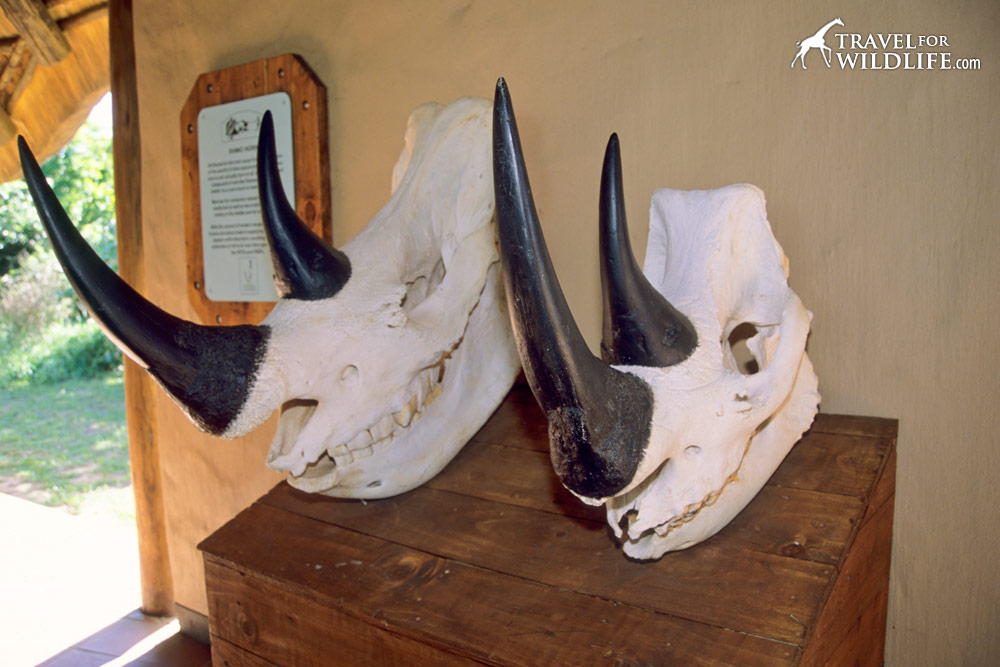
Hluhluwe Game Reserve, South Africa
Where To See White Rhinos and Black Rhinos in the Wild
Although both Black and White Rhinos can be found at many national parks and private reserves across southern and western Africa, many no longer advertise that fact due to increased threats from poaching. In fact, the rhino poaching crisis is now reaching horrifying levels. Yet many national parks still proudly boast of their rhino numbers in hopes that more people will get out and see them and appreciate them for the spectacular creatures that they are. People who learn to love rhinos are far more likely to help preserve these endangered animals and keep them around for generations to come. You may also notice that many national parks no longer list rhino sightings on their daily sightings boards so as not to advertise the specific locations of rhinos. Just get out there and keep your eyes open!
Personally we’ve had our best luck seeing Black Rhinos in Namibia’s Etosha National Park, especially at night the Okaukuejo Waterhole adjoining the Okaukuejo rest camp. Here are some other suggestions of places where you can watch both White Rhinoceros and Black Rhinoceros.
National Parks and reserves where you are likely to see both Black Rhinos and White Rhinos:
South Africa
- Kruger National Park
- Hluhluwe-Imfolozi Game Reserve
- Pilanesberg National Park
- UMkhuze Game Reserve
Namibia
- Etosha National Park
- Desert Rhino Camp (Black Rhino only)
Swaziland
- Hlane Royal National Park
Kenya
- Lake Nakuru National Park
- Lewa Wildlife Conservancy
- Ol Pejeta Conservancy (the only place to see the critically endangered Northern White Rhino)
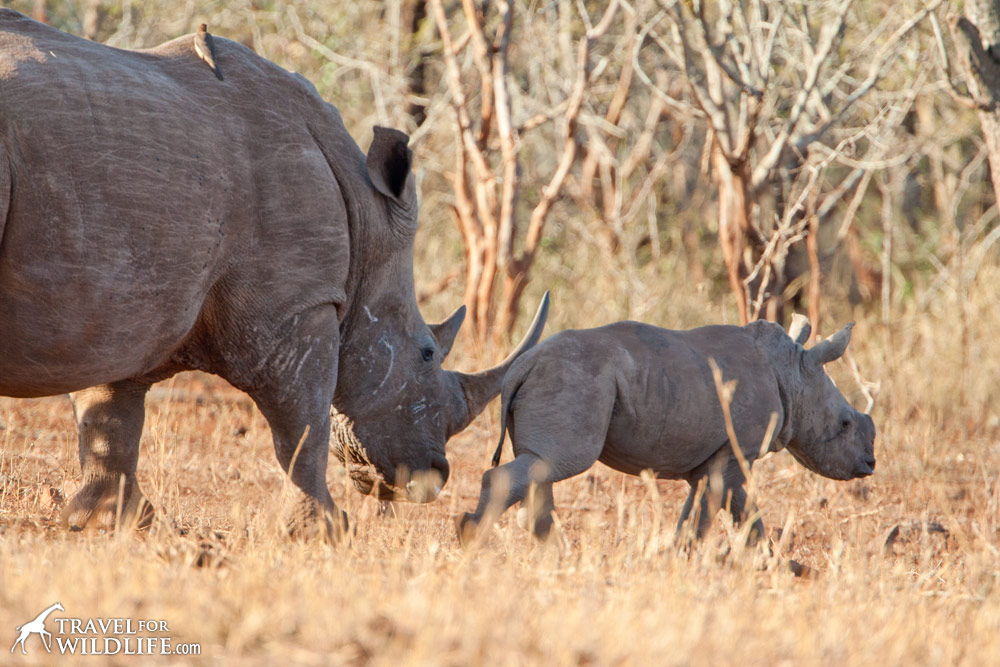
When on safari, you might only have a short window of time to identify a rhino. Look at the mouth, quick! After that, the other identifiable traits will be easy to recognize.
Have you seen a wild rhino? Did you manage to identify it? Tell us in the comments! (to keep them safe, keep your sighting location very general, and if it was at a private game reserve, please do not disclose the location)

Hal Brindley
Brindley is an American conservation biologist, wildlife photographer, filmmaker, writer, and illustrator living in Asheville, NC. He studied black-footed cats in Namibia for his master’s research, has traveled to all seven continents, and loves native plant gardening. See more of his work at Travel for Wildlife, Truly Wild, Our Wild Yard, & Naturalist Studio.

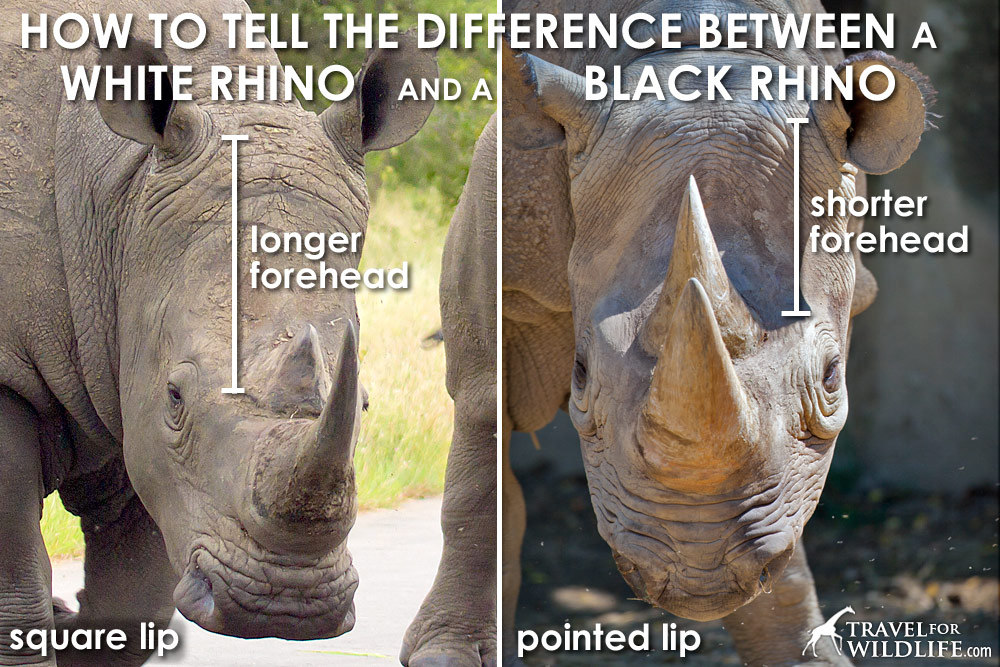
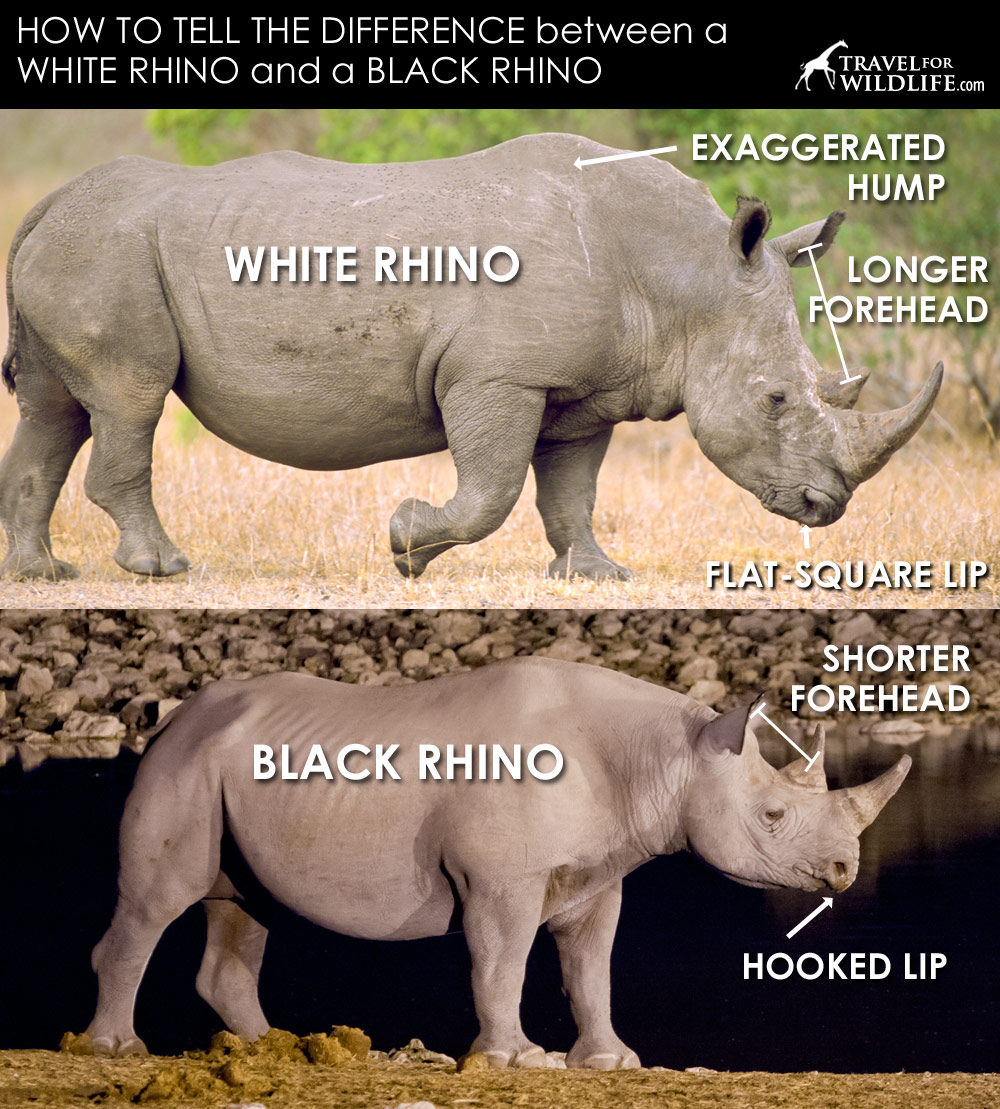
Lynance Mverechena
Wednesday 11th of October 2017
Very informative and well written. But you also failed to mention that rhinos can be found in Zimbabwe. Am referring to your list where you can find them in game reserves. Other than that,you really know your rhinos. Please keep us posted on ways to combat rhino poaching.
Ama Menec
Thursday 24th of August 2017
This is terrifically useful information, thanks! I'm working on two Rhino sculptures for a British Zoo, for life sized White and Black Rhino heads and wondered if you had any measurements for average head lengths? I've looked everywhere, and asked everyone, to no avail! I'd made my maquettes (scale models) with the white rhino quite a bit bigger, then thought I should pare it back, but looking at this information makes me wonder if it's OK after all?! It'd be great to know for sure. Very many thanks, Ama Menec Sculpture, Totnes, UK.
CAROL DAVENPORT
Saturday 20th of August 2016
That was very informative, Thank You.